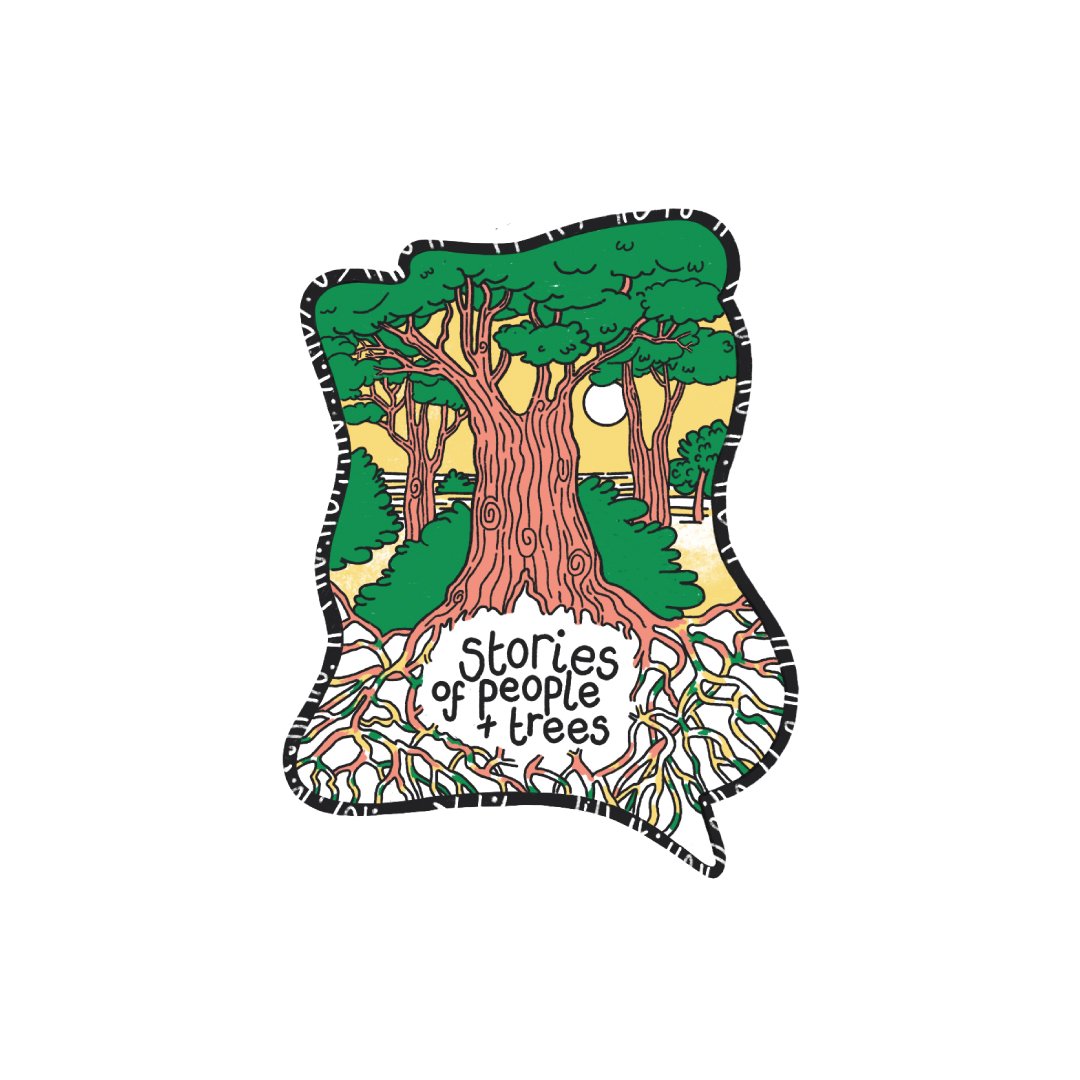The fossil grove
Accompanied by ‘Fossil Grove’, composed for string quartet by Paul Towndrow and performed by Glisk
With this story, Margaret takes us back 300 million years - yet it is still possible today to visit and see these fossilised trees, which give us a window back into the far reaches of history. Grandchildren Zofia and Oscar have kindly added their own artists impression of the trees as they are thought to have looked in their heyday - do see the end of the story for their artwork, which includes themselves for scale.
Inside the Fossil Grove - two of the fossilised tree stumps.
Once upon a time, great forests of trees that we now call Lycopods (meaning ‘wolf-foot’, a description of the appearance of the roots) grew in the land that we now call Scotland. But that was long, long before there were people on planet Earth; it was even long, long before the dinosaurs existed. It was, in fact, around 325 million years ago, during the time that geologists have named the Carboniferous Period because of the abundance of coal (which consists mainly of carbon) that the Carboniferous Period eventually gave rise to. And the land that we now call Scotland was far, far away from where Scotland now stands in the northern hemisphere of the planet. At that time ‘Scotland’ was, in fact, situated near the equator, where forests flourished in conditions that were even hotter, steamier and swampier than they are in equatorial regions today, and where giant insects scuttled and whirred among the trees. But it is not even true to say that these two tree-stumps that can be seen in the photograph (and their nine Fossil Grove companions) are the true remains of those long-gone Lycopods; rather, they could be said to be the ghosts of those ancient trees - though they are very solid and substantial ghosts! For those tree-stumps and their now lifeless roots have long ago been turned to stone.
Nevertheless, in their day they were mighty trees, although very different from any tree that now exists on Earth. Forty-five metres was the towering height reached by each crown of leafy branches, supported by a straight trunk, and the thin, diamond-patterned bark enclosed a soft, pithy centre. Then the time came when a storm raged, felling the trees. The ensuing flood engulfed the remaining stumps with sand and mud; the soft centres of the stumps decayed, and were replaced by yet more sand. Time and geological forces buried the stumps: they lay deep under sediments washed down by mighty rivers, and, under the resulting pressure, the sand within the stumps turned to rock: they became sandstone stumps. Then, in the fulness of time, volcanoes erupted in the land that was to become Scotland, and some of the stumps were infiltrated by lava.
Eons passed.
Continents moved.
At last, the time came when people populated the lands of planet Earth, and countless are the stories of the interaction throughout the millennia between people and trees - trees that are very different from those ancient, long-extinct Lycopods. But, over time, legions of Lycopods were metamorphosed. Through deep burial throughout millions of years, they were transformed into coal: coal which people toiled in hardship and misery and danger to wrest from the Earth, but which, paradoxically, brought numerous opportunities for human progress. And yet, would it be better, many people now ask, to leave the remaining reserves of those metamorphosed ancient trees to slumber undisturbed in the depths of the Earth, rather than to be transformed for people’s use into fossil fuels, which trail so many hazards in their wake.
But what of the eleven sandstone tree-stumps of Glasgow’s Fossil Grove? After their epochs-long burial, their time in the sunlight came around once more. One hundred and thirty five years ago, while a park for the people of Glasgow was being created in celebration of the Golden Jubilee of Queen Victoria, excavations uncovered remains of a grove of ancient trees. Geologists, palaeontologists, journalists, and ordinary folk alike were thrilled and awed by the discovery. Experts identified those Lycopod fossils as Lepidodendron veltheimianum, with the root system Stigmaria ficoides, a common species of Lycopod of the Carboniferous Period. A house was built over the fossils to protect them from Scotland’s wind, rain, snow, frost, ice, and the occasional spells of desiccating sunshine to which they were exposed for the first time in their existence.
And people still come, from near and far, to gaze, to wonder, and to admire those eleven fossil tree-stumps that stand in silent witness to a time when, long, long before people existed upon the face of the Earth, mighty equatorial forests flourished and grew tall.
[The name ‘Lepidodendron’ is derived from Greek, and means ‘scale tree’ because of the scars left on the bark of the trunk by the leaves once they were shed as the tree grew; and ‘veltheimianum’ comes from the name of Count August Ferdinand von Veltheim (1741-1801), a German mineralogist and inspector of mines, who had a great interest in botany. ‘Stigmaria’, from the Greek word ‘stigma’, meaning a mark, refers to the scars visible on the fossil roots where root-like appendices formerly grew on the roots of the living tree, while ‘ficoides’ refers to the round scars left by those appendices, the shape of the scars seeming to resemble the shape of small figs; hence, ‘Stigmaria ficoides’: fig-like marks on the roots.]
More information on the fossil grove, including how to visit and see the Lycopods for yourself, can be found here: https://fossilgroveglasgow.org/


